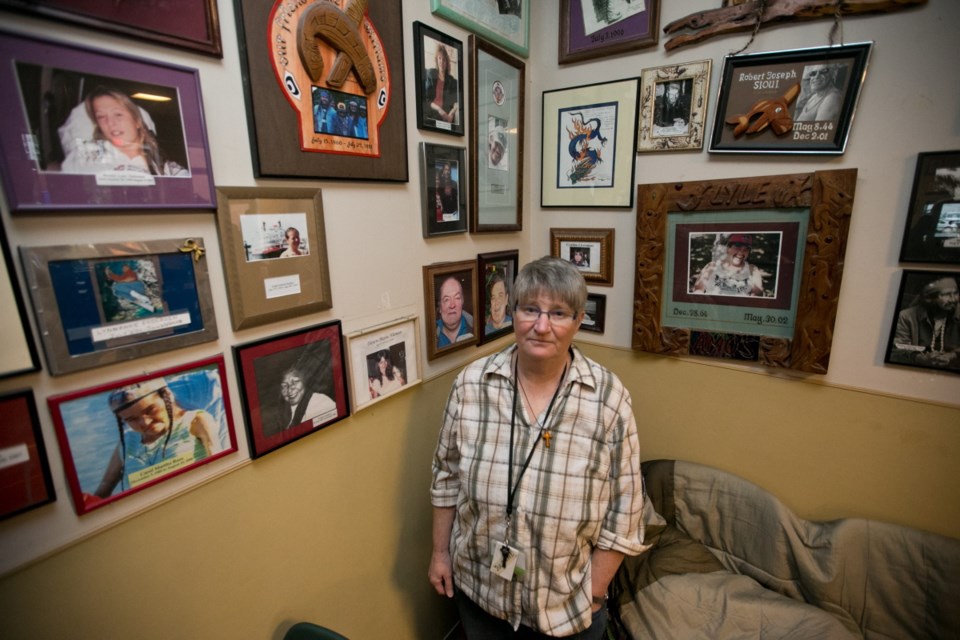A hospice for the homeless
The man who prompted nurse Caite Meagher to action was six feet tall, 89 pounds and still pacing the streets, two weeks before he died.
She knew the man, who was in his 50s, through her work at the Cool Aid Society. He was HIV-positive and suffered from mental-health issues, as well as a crack-cocaine addiction. But she saw him differently after she spent a period of time learning about palliative care — an area of health care focused on relieving suffering rather than curing patients.
“It just really hit me,” she said. “When I looked at him through my palliative lens, I thought, oh my goodness. If he were a middle-class man, he would have been in bed for weeks, if not months at this stage, receiving care from his family or the homecare services.”
Instead, she said that like many homeless and marginalized community members, he was dealing with illness largely on his own.
“There was no specialized team to reach out and just hold his hand and offer services if he wanted them. So that’s what really hit me: That we needed to start reaching out and getting some services to these people,” she said.
Meagher set out to change that. Today, she is one of about 10 community outreach workers who make up the Palliative Outreach Resource Team. PORT’s end-goal is to build a palliative care facility for homeless and marginalized community members, so they have a space to spend their final days in comfort. For now, they advocate on behalf of those suffering for housing, then connect them with homecare services and try to deliver end-of-life care in any way they can.
“Traditionally, these clients don’t always receive access to care because of their housing situations,” Meagher said. “If they decline housing, we work with them where they are.”
PORT receives no direct funding and volunteers typically work on it “off the sides of their desks,” Meagher said. In its ranks are employees of Cool Aid, AIDS Vancouver Island, Our Place, the Victoria Native Friendship Centre, the Dandelion Society and Victoria Hospice, as well as volunteers from the University of Victoria.
Lucie Mattar, a Victoria Hospice community counsellor, joined the group last spring. While PORT focuses on physical care, she works with another counsellor to offer spiritual care through bereavement counselling at Our Place Society. Their work is funded through a $250,000 donation to Victoria Hospice from the Victoria Commandery CCT of the Sovereign Order of St. John of Jerusalem.
“In this community, there are so many deaths that occur. We wanted to provide a place where people can talk about the deaths, can grieve and support each other through telling their stories of loss.”
Mattar gives group and one-on-one counselling through Our Place about once a week. Some days, there’s a lineup out her door, she said. Other days, it takes an hour before the first client of the day arrives.
“If your daily focus is on survival, for example food and shelter, planning for a future appointment may not be realistic,” she said.
Chaplain Julianne Kasmer has also provided support to the grieving at Our Place. The wall outside her office is covered in framed photos of members of the Our Place “family” who have died.
Grief isn’t different for the homeless community, she said, there’s just more of it.
“It’s compounded by so many complications in people’s personal lives and by the sheer number of deaths, unexpected deaths, premature deaths and deaths from causes that most people in the general population don’t have to deal with,” she said.
PORT and the bereavement counselling program are filling a need, she said, but there’s still more work to be done.
“There is no answer, except by presence. We’re present and building relationships.”



